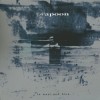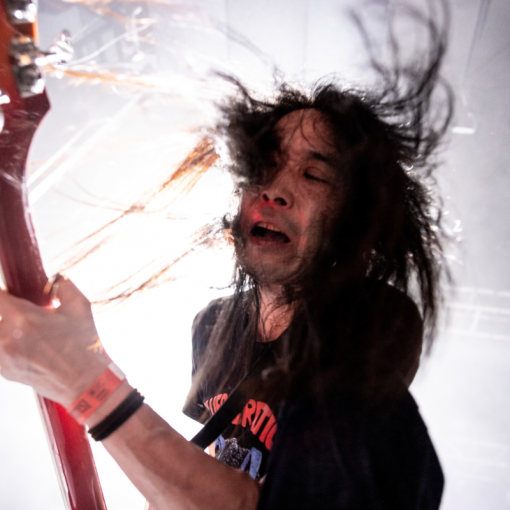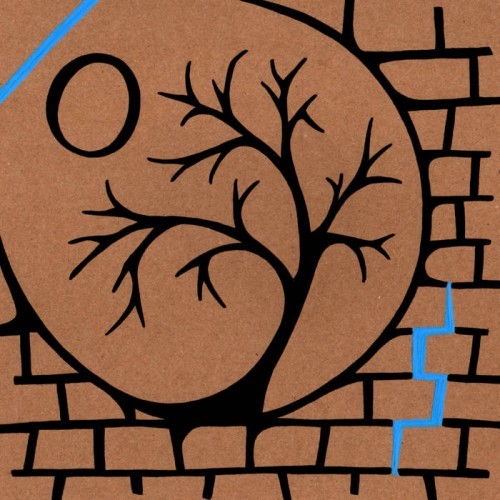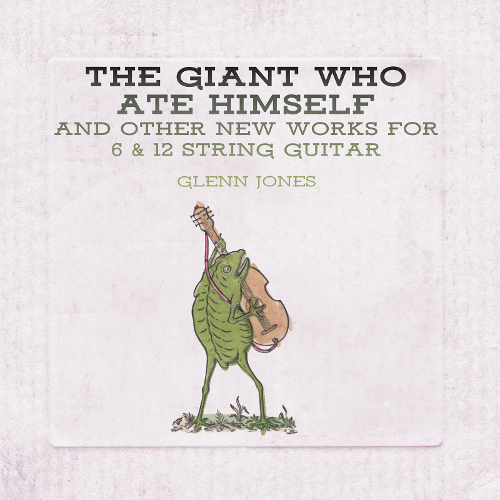 To West And Blue is the 50th (!!!) album by Rapoon, and it trades in dark ambient’s typical deep space cosmic horror for mudflats and marshlands, making for a superb movie of the mind. The album was inspired, in part, by a part of Britain where Robin Storey, here known as Rapoon and also co-founder of influential industrial terrorists :zoviet-france:, grew up. Here’s how he describes it:
To West And Blue is the 50th (!!!) album by Rapoon, and it trades in dark ambient’s typical deep space cosmic horror for mudflats and marshlands, making for a superb movie of the mind. The album was inspired, in part, by a part of Britain where Robin Storey, here known as Rapoon and also co-founder of influential industrial terrorists :zoviet-france:, grew up. Here’s how he describes it:
These pieces are about the area grew up in in the UK. A peninsula of land which stuck out into the Solway Firth. Surrounded by the sea when the tide was in and surrounded by endless mudflats when the tide was out. When the water covered the ground the line between the sea and the sky was almost non-existent. A diaphanous boundary. The sea came in from the West where the huge skies hung without end in a vault of blue.
“To West And Back” is a grey and spectral boat ride, through a shifting, inconclusive world. Storey uses traditional instrumentation – like piano, marimba, saxophone and organ – to create a world: banks of fog, wind chimes, cat tails and roadhouses. It reminds me of both Eel Marsh House, in Susan Hill‘s The Woman In Black when the tide is in and yr cut off from the waking, rational world; or the supernatural landscape of Algernon Blackwood‘s The Willows; the sense of being surrounded, the sense of awe and terror that comes from real, face-to-face interaction with nature.The landscape evoked on “To West And Back” is not maleficent, per se, as much as irrational. Deep electronic drones, swarthy in cavernous echo, sounding like the bottom of the ocean, create a dense and shifting wall, where tones rise and fall like dreams or visions. It’s very much a journey, a place to walk around and explore and get lost in. It starts off pretty haunting and lonely, but ends with the sun burning through the clouds, ending on an up note.
One of the defining factors that makes or breaks experimental music, whether making it or listening to it, is a sense of narrative, a sense of something going on. Otherwise it becomes such meaningless line-noise, a series of abstract tones, bouncing off the ear. When listening to ambient, dark ambient, drone or noise album, you can’t help but wonder: what is the producer getting at? When music is neither tethered to language or even traditional musical systems, even the idea of “what is good” goes out the window.
For a time, and perhaps even now, the words ‘drone’ and ‘noise’ seem spit out with scorn. “Just another shitty drone record,” said with derision. During the first phase of blog culture, it was a thing of beauty, a style supported and wondered at. And then all of a sudden the tide turned, like in Solway Firth, and drone music was no longer cool. People started to burn out, over-saturated with 1,000,001 digital manipulations, released for free on Bandcamp.That’s part of why it’s important for producers to maintain quality control. And why it’s important to the listeners to not become jaded. Because there is bounty to be rewarded, from listening to imaginative, subjective music. It sets yr imagination alight, lets you draw yr own conclusions, have yr own fantasies, inspires yr own creativity. It inspires the way that we look at the world, and at Art, and what is possible.
Listening to music is a “hot”, imaginative medium, that plays out between yr ears even more so than literature, which is still tied to “words” and the “alphabet”. Since Futurism, and musique concrète, ever since we got tape recorders, basically, every sound on earth (not to mention from the archives) is at our disposal, and the rules of how to sculpt sounds into music are still being written. It’s kind of like the Wild West; anything goes. Which leaves it up to the producers, and the listeners, to decide for themselves what they are attempting, and whether it succeeds or fails.
So it’s important to grasp the music you are listening to, to have a way to latch on and relate to it. To make it memorable. On the part of the artist, that means being brutally, abundantly clear what they are trying to say, how they are going to say it, and why. A lot of the abstract, droney music that you’ll hear, especially being made contemporarily, is being made in the computer and is built out of loops. A lot of the ‘why’ is merely screwing around, un-patterned and not saying anything other than, “look, this is me, screwing around with my machines.” Which is all well and good, and we all love messing about with machines; but the question remains: what, then, to do with it? How to go from abstraction to a moving piece of sound art/musical genius? Especially when the pallet is unlimited?
That’s part of why it’s important to listen to people who have been making electronic music for a long time. To hear how they go about it, and what they are attempting. That’s not to argue that just because something’s ‘old’ or ‘classic’ means it’s necessarily good, although the recent revival of interest in archival and re-issues of vintage electronic and industrial music certainly indicates that people’s ears are grasping for it. But people like Robin Storey have been making music for a long time – clearly he is committed, and one would suspect has probably learned a thing or two along the way.
When musicians had more limited means at their disposal – rudimentary synths and basic 4-track recording – they had to learn traditional musical values – how to play an instrument, how to write a song and execute that to the best of their ability. There was a sense of innovation and experimentation, as they were trying to describe the images they had in their head, re-invent the musical language and pretty much create the template of the avant-garde techniques we use today. Long, sustained tones (“drones”), rhythm, loops, FX, pedals and manipulations. There’s a million ways of doing it, and each one has pretty much it’s own sub-genre.This is truly important, this pushing forward, this striving towards mastery of painting with sounds and building new instruments, new song structures. Otherwise, we will recede into brash and blaring rehashing of pop formula, with each boy band screaming over the last. But it’s also important the electronic producer holds him/herself accountable, learns the ropes, considers what has come before, and who their intended audience is.
I’m glad to see Rapoon expanding the scope of dark, mysterious and immersive ambient music – which trips into horror tropes far too often, and quickly slides off the ear with recognition. I’m also glad to see him still pushing limits, expanding the canon, making masterful music. This is truly exceptional sound sculpture, make no bones about it, that will conjure all manner of subjective worlds in yr imagination, and inspire you to make yr own.
-J Simpson-



